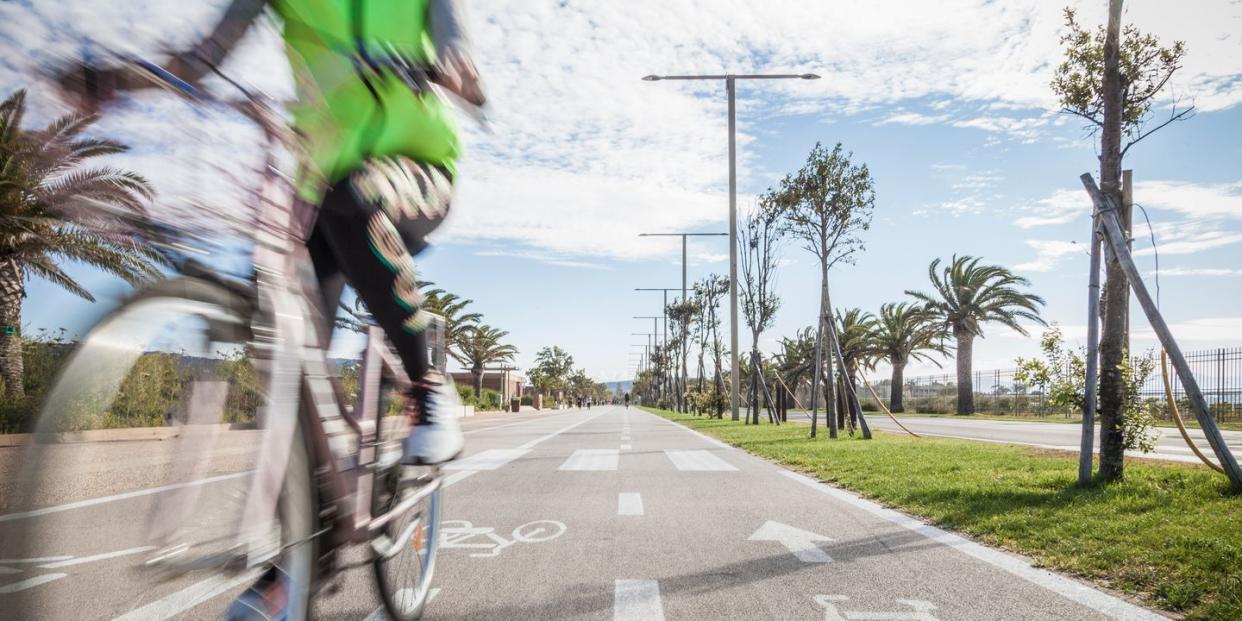New Study Shows Helmets and Safety Vests Make Riders Appear “Less Human”

In unfortunate news for safety-conscious cyclists everywhere, a new study published in the May edition of Transportation Research examined how cyclists were viewed based on their safety gear and found that, in some cases, safety gear leads to riders appearing “less human.”
Researchers Mark Limb of the Queensland University of Technology and Sarah Collyer of Flinders University found that 30 percent of their respondents viewed cyclists wearing safety gear like helmets and safety vests in a dehumanizing manner.
Higher dehumanization perceptions, or seeing and treating people as less than fully human, have been linked to more aggressive behavior, a propensity to commit violence, and unfairly assigning blame.
“Some cars are very [aggressive] when I ride road bikes wearing jerseys & helmet, but they are much much nicer when I ride fixed bikes wearing casual clothes & helmet,” posted one Twitter user in response to the survey.
Some cars are very agressive when I ride road bikes wearing jerseys & helmet but they are much much nicer when I ride fixed bikes wearing casual clothes & helmet
This paper only validates that but iy is pretty much a universal experience most cyclists are aware of— justaufar ⚡️ (@justaufar) June 7, 2023
On this premise, researchers set out to learn how strongly that perception might be, surveying 563 people. This group was shown images of cyclists wearing helmets or safety vests and photos of cyclists without no safety equipment.
“We found images of cyclists wearing helmets or safety vests to have a higher probability of being selected as less human compared to images of cyclists wearing no safety equipment,” according to the research abstract.
Motorist aggression towards cyclists has resulted in countless injuries and deaths. To this end, cyclists, the most vulnerable road users, are cautioned to wear helmets and reflective elements like safety vests to increase their visibility to motorists.
More than 20 states in the U.S., including the District of Columbia, and approximately 200 localities require cyclists to wear a helmet, according to the Bicycle Helmet Safety Institute. Despite this requirement, which primarily applies to persons under 18, the Insurance Institute for Highway Safety states that death rates among cyclists over the age of 20 have quadrupled since 1975. The IIHS notes that most of these deaths are due to head injuries, which highlights “the importance of wearing a bicycle helmet.”
Safety vests, unlike helmets, are strongly recommended but not legislated. However, in 2015, Pennsylvania House Bill 1361, which failed to pass, would have required any person operating a bicycle “between sunset and sunrise shall wear high-visibility safety apparel, which may include a vest, jacket or shirt, that is retroreflective.” Additionally, multiple studies, including recent research from Italy and the U.K., found that“high-visibility clothing for cyclists did not influence the number of bicycles involved in road crashes.”
Still, the study found that removing helmets wasn’t enough to “humanize” cyclists. “Cyclists without helmets but wearing high visibility vests were more likely to be perceived as less human compared to all other attire types tested,” it found.
Despite these findings, research has shown that in some cases, reflective vests provide some safety benefits, and countless cyclists credit helmets for saving their lives. The authors also caution against jumping to the conclusion that “mandatory bicycle helmet laws reduce ridership due to dehumanization.”
You Might Also Like

